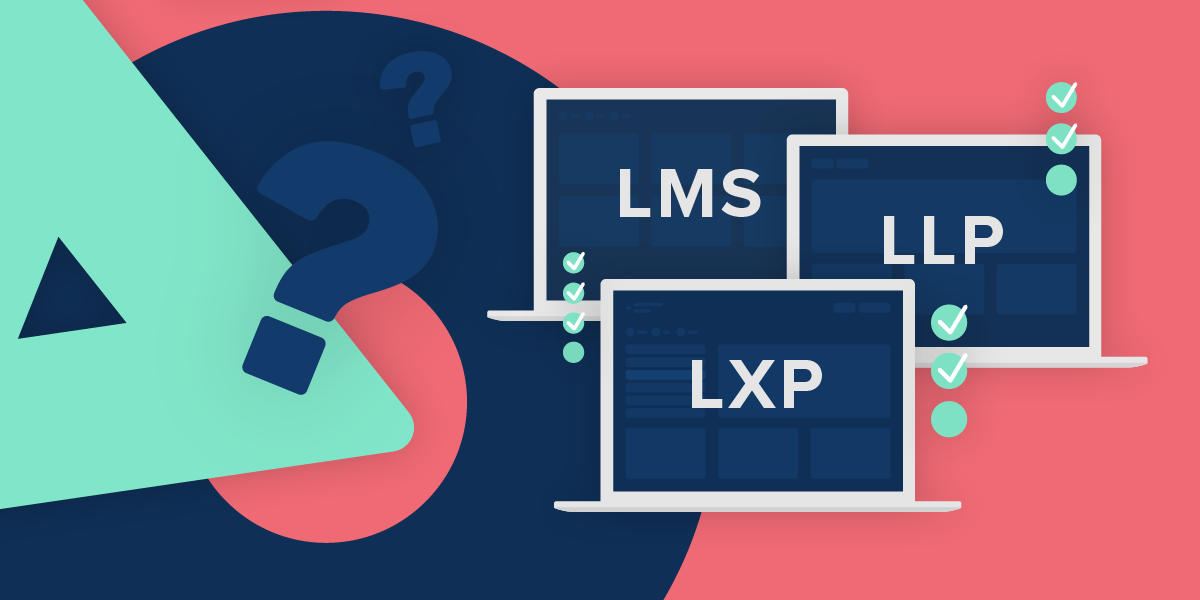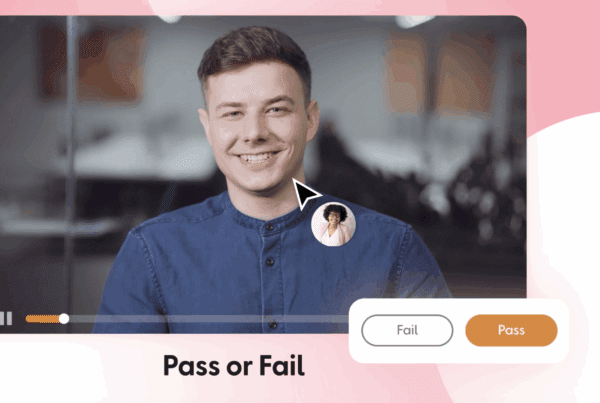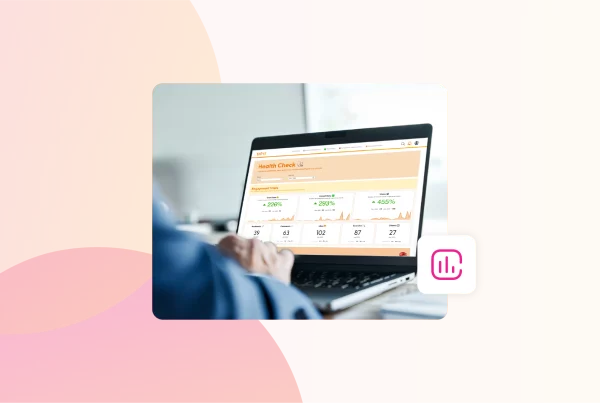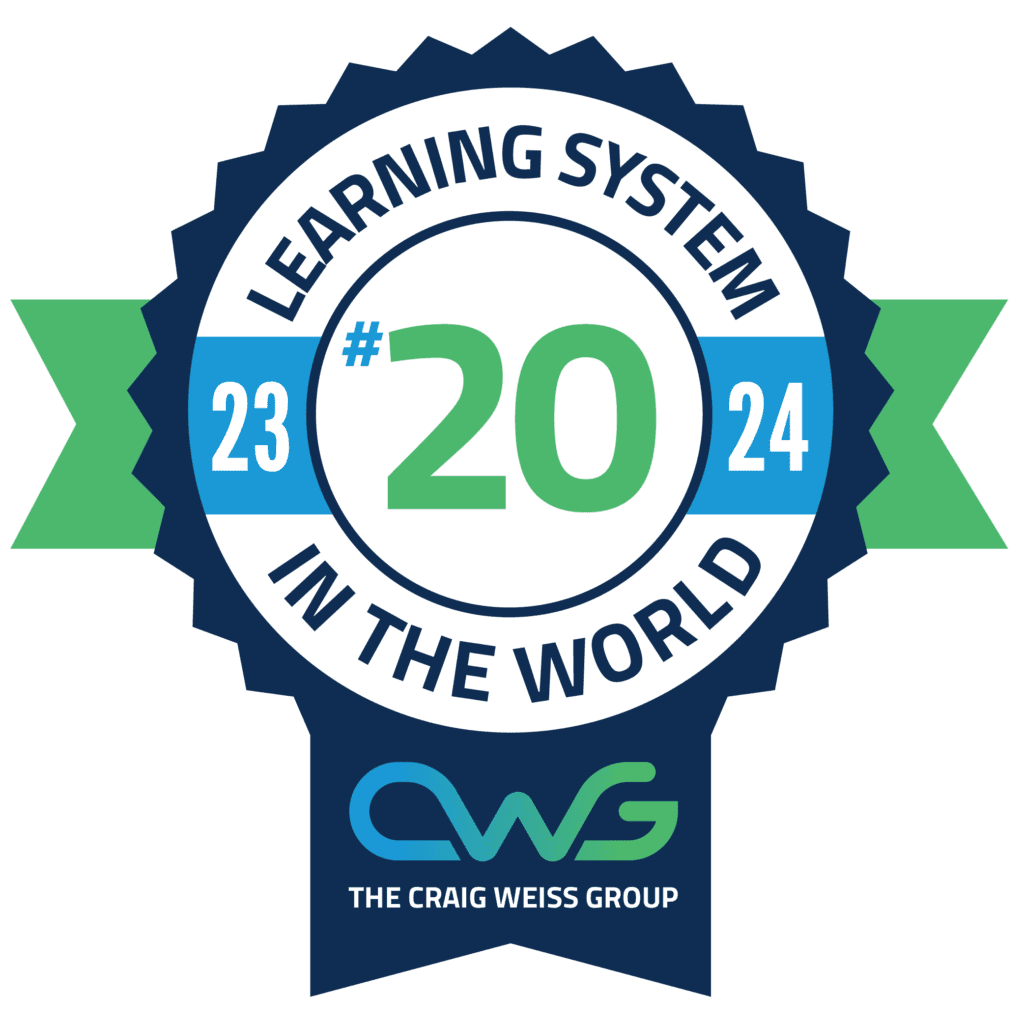The traditional LMS feels like they’ve been around forever and in many ways they have.
Way back in 1924 a very clever man (and the original L&D trailblazer!) Sidney L. Pressey invented the very first teaching machine.
OK, so it wasn’t on a fancy computer but what it lacked in design it made up for in many of the practical learning features that we all use still today – lots of practical exercises, multiple choice questions AND a learner could only progress if their response to the previous questions was correct….sounds familiar right?
Over the years, however, the way we have learned has changed and there is one very BIG reason….Technology!
The rise of technology has changed how, when and where we learn forever…it’s also changing the way our brains work too. ?
This has meant that learning platforms have had to evolve and shift towards a more personalised and continuously adaptive learning experience.
This is where the Learning Experience Platform comes in.
In this blog, we’ll cover everything you need to know about LXPs, including:
- What is a Learning Experience Platform, or LXP?
- Benefits of a Learning Experience Platform?
- Should you implement an LXP?
- Frequently asked questions about LXP
If you work in e-learning or have ever completed a piece of online training, you may have come across the term “LXP” at some point. You may have even used an LXP without knowing.
1. What is a Learning Experience Platform, or LXP?
LXP is currently the most commonly used acronym for ‘learning experience platform.’ An alternative, less well-known but perhaps more literally accurate abbreviation is LEP.
As the world of e-learning continues to grow rapidly and technology tries to catch up with changing consumer demands, we’re predicting LXPs to be the catalyst for a new era of learning.
But what does an LXP even do?
To try and shine a little bit of light on the subject, we’re going to break it down for you in simple terms…
According to searchhrsoftware, an LXP is “an AI-driven peer learning experience platform delivered using software as a service.”
Now that’s a bit of a mouthful, so let’s explain further.
To us, an LXP is the new and improved way of learning that puts the user first.
It’s a platform that uses the individual skills, interests and interactions of each learner to create personalised learning experiences that are completely unique to them.
This personalisation is what makes LXPs so powerful and effective for learners as they are directly involved in the process of curating the learning material they want to consume.
Visual learners will have the option to discover more videos, audio learners may gravitate towards podcasts, and more traditional learners will have a range of articles pulled from academic sources to read and enrich their learning.
Similarly, if you prefer to learn on the go in bite-size chunks, you can choose short pieces of content to digest on the commute to work, or if you like to get really in-depth when studying a subject, there are plenty of long-form pieces of content to consume on a Sunday afternoon.
It really is up to the learner, and LXPs give you all of this at your fingertips.
2. Benefits of a Learning Experience Platform?
Learning Experience Platforms reflect the way that technology is changing our learning habits and behaviours….
👥 From Individual to Social Learning
Long gone are the days of courses and learning materials that were solo activities.
Modern learners want to learn more socially and collaboratively – problem-solving, sharing knowledge and doing all of this in real-time when they need it the most – in the flow of work.
Learners are able and encouraged to engage with their peers through actions such as liking, commenting and sharing, helping to organically spread knowledge around the team, enabling everyone to stay motivated, engaged and grow together.
🥰 Personalised Learning Journeys, Not Long Mandatory Training
The best LXPs even use powerful machine learning and artificial intelligence to learn from you about what you like and then show you more of it.
The concept is that every single person has a completely unique learning style and set of learning objectives, and if these can be catered for individually, a learner’s skills will be elevated to new heights.
LXPs cater for the individual and the vast majority of businesses and organisations will see a dramatic difference in user engagement between a platform that is reactive to the user’s individual interests compared to one that is not.
🧠 Empower Collaboration & Tacit Knowledge Sharing
LXPs create a platform to capture and share the biggest asset of any business…Tacit Knowledge!
That’s the knowledge, skills and abilities that come from within your team but are difficult to transfer across the others because more often than not it comes from personal on-the-job experience.
Rather than an L&D Manager or a Training Department having to write or source all the learning material for their employees (which, let’s face it, is an impossible task to do on an individual basis), LXPs harness the power of Tacit Knowledge by providing a place where this information can be quickly shared.
It also reduces knowledge loss if an experienced member of the team leaves the business, making it much faster to upskill new hires.
Thirst lets users create their own content within the platform as well as being able to add any existing training materials they may have, creating a centralised hub of learning that can then be shared across the teams and orgs within a business.
📊 Deep Data Insights Drive Learner Engagement
Ah the traditional LMS, they put the admins in control and are awesome platforms for mandatory training, compliance tracking and control over the types of learning content that is accessible.
An LXP gives key insights into learner behaviour to help you make better data-driven decisions that will help develop the learning culture across your business.
Organisations can use that data to identify potential skills that would benefit a learner, accelerate their career and identify knowledge gaps that may be stopping them from making progress.
Rather than just having visibility of compliance, you can uncover valuable information such as ‘which age group are most likely to consume learning materials for their own development?’ and ‘Which is the best-performing job role in the business?’
This data can then be used to identify trends and turned into actionable insights that help to drive growth across the business rather than just becoming a platform that is owned by the L&D team.
✅ Skills, Skills and More Skills
Organisations across the world are rethinking skill building and with good reason…it’s the best way to reduce the widening skills gap.
It’s much more cost-effective to reskill a current employee than to hire a new one and with upskilling and reskilling programmes on the rise, organisations are starting to understand this.
Modern LXPs like Thirst, recognise this changing trend and put skills-based learning at the centre of the platform, letting learners not only select the skills they want to develop but also identify and recommend the skills that will help them to move closer to their personal goals and help them to advance their careers.
Organisations are paying closer attention to their skill-building programmes for employees, seeing better retention, higher engagement and reduced hiring costs.
3. Is an LXP right for your organisation?
This all sounds great, but you might be thinking…
Are LXPs costly and difficult to install?
Not at all!
Most LXPs are built as SaaS products (Software-as-a-Service) so there are no expensive downloads or costly fees to host the platform; you simply access the platforms online with a simple, low, monthly subscription fee.
At Thirst, our learning platform is not just easy to use and discover valuable learning content but it’s also effortless to create new material too. This creates a huge advantage for time poor L&D teams that simply don’t have the time and resources to constantly create new courses.
This means you can get set up and share knowledge in hours not weeks.
4. Frequently asked questions about LXPs
Why is a Learning Experience Platform important?
An LXP is a way to make learning and development more accessible and engaging across your organisation by delivering personalisation learning content-based learners’ interests in the flow of work. Once a buzzword and type of new learning platform, LXPs are quickly becoming the standard way for L&D teams to make learning more accessible.
What’s the difference between an LMS and LXP?
Unlike traditional Learning Management Systems (LMS), which primarily focus on managing and delivering training content, LXPs are built around the idea of learner-centric experiences. They use powerful AI, machine learning, skills engine and social engagement to help L&D teams create exceptional learning experiences that put learners in the driving, giving them the ability to consume the content they need to level up and share that knowledge quickly across an organisation.
You can learn more about the key differences between an LXP and LMS in our in-depth guide
What to look for in an LXP?
If you decide that an LXP is the right fit to drive your learning culture forward, then there are essential features that you need to look out for.
- Intuitive, customisable and user-friendly dashboards to feature-rich and more engaging experiences for learners.
- Personalised recommendations that increase engagement and accelerate learning.
- Skills engine that enables faster skill building and career development.
- Social learning and collaboration for increased employee engagement, rapid onboarding and faster upskilling and reskilling.
- Fast access to exceptional learning content for easy content discovery, creation, curation and sharing.
- Encourages user-generated content that nurtures an authentic community of knowledge influencers across your organisation.
- Detailed Insights and powerful analytics that help you to understand how your team learns and make better data-led decisions.
- Mobile Optimised that empowers learning on any device
How conversations are changing around Learning Experience Platforms
Phew! That was quite the LXP overview, we know.
We covered a lot about— how an LXP works, its benefits, and what you need to look for.
But now you might be wondering…what do I do with all of this information? How do I deliver that experience across my organisation, and embed a culture of continuous learning?
We’re here to help.
Learn how Thirst LXP can elevate your learning culture today.
For more e-learning news, advice and information, read the Thirst blog…
What Is the Difference Between Knowledge and Skills? | How to Keep L&D Fresh In a Hybrid Workplace | 5 Ways Incorporating L&D Into the Working Day Can Benefit Your Business







